
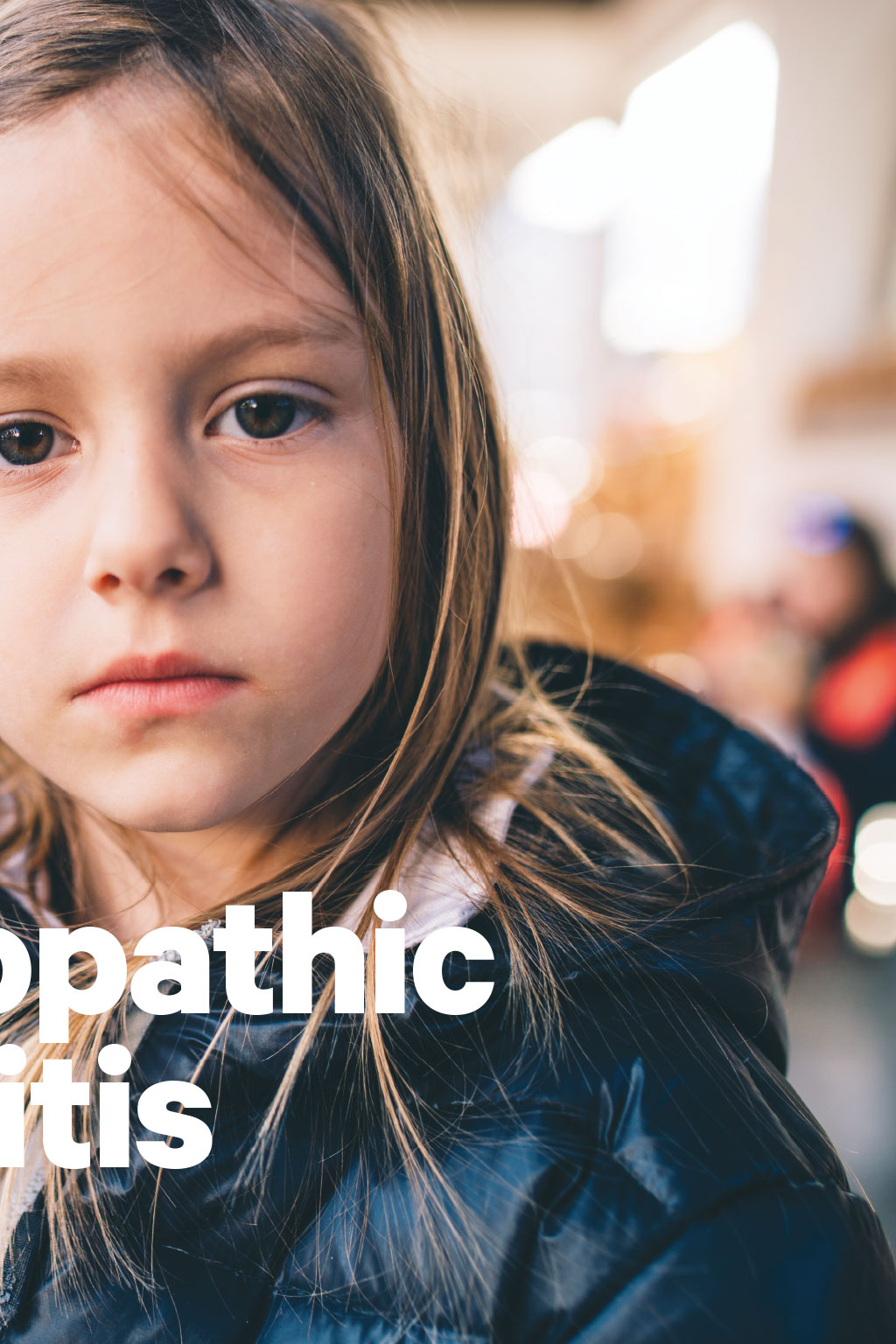
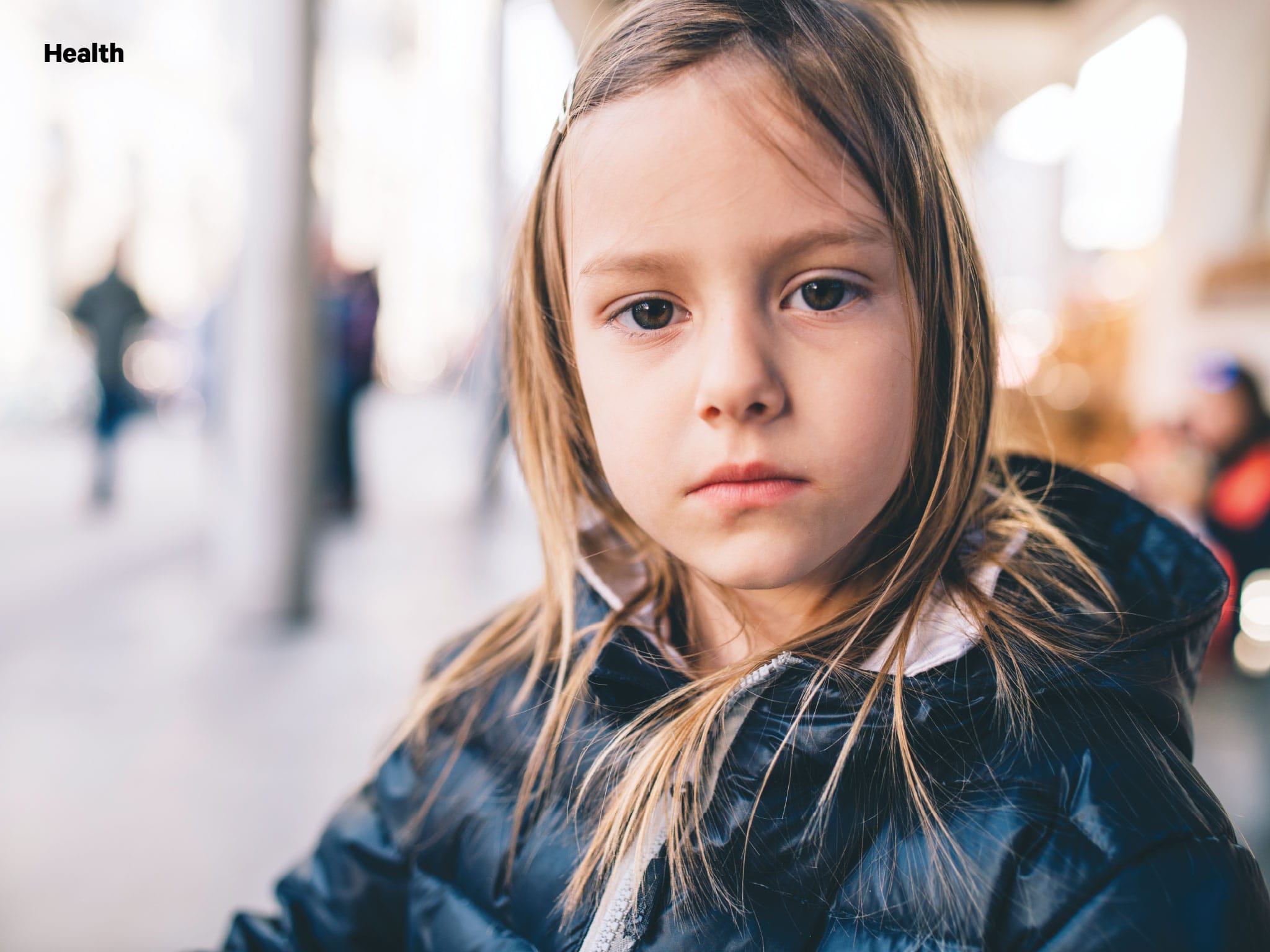
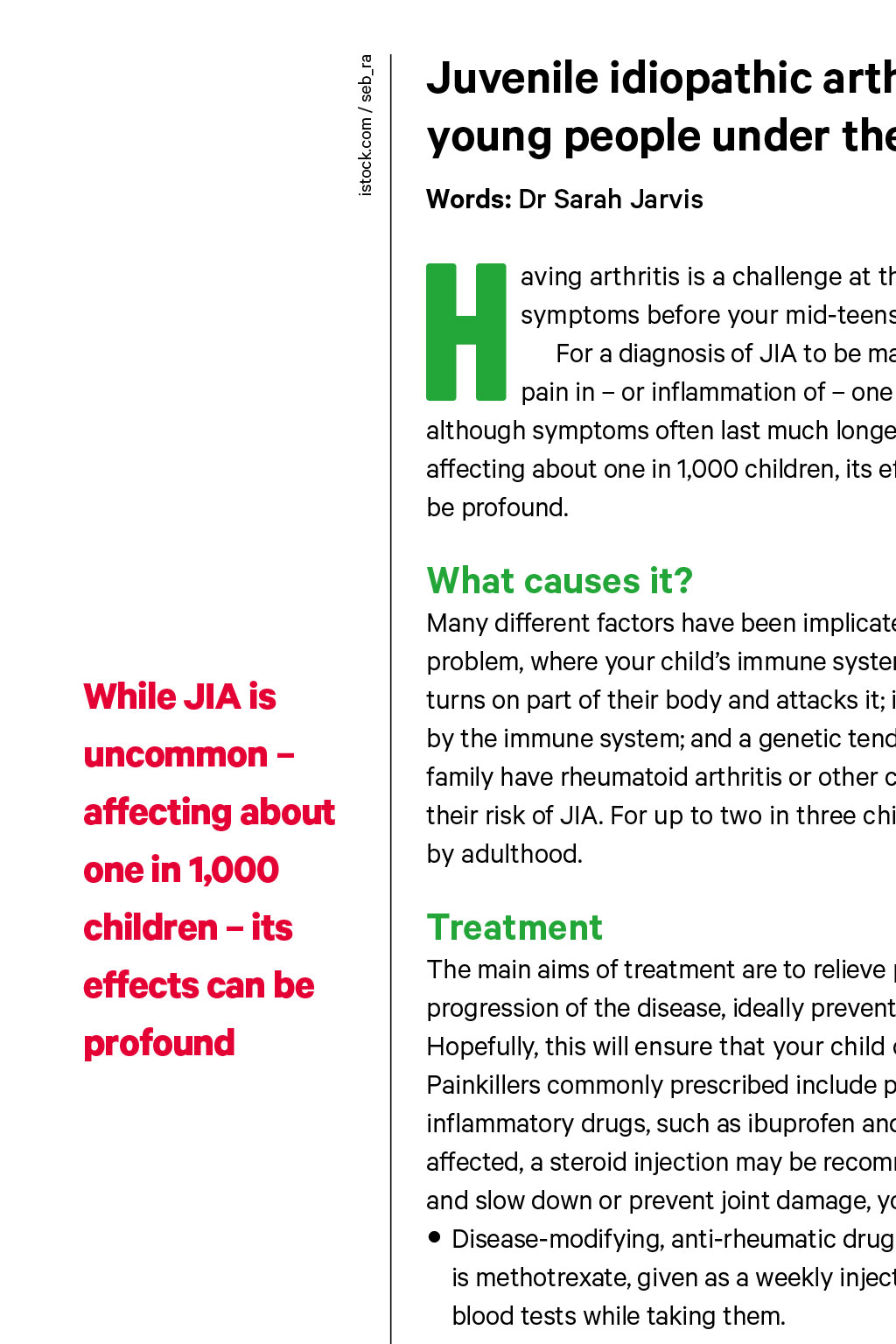
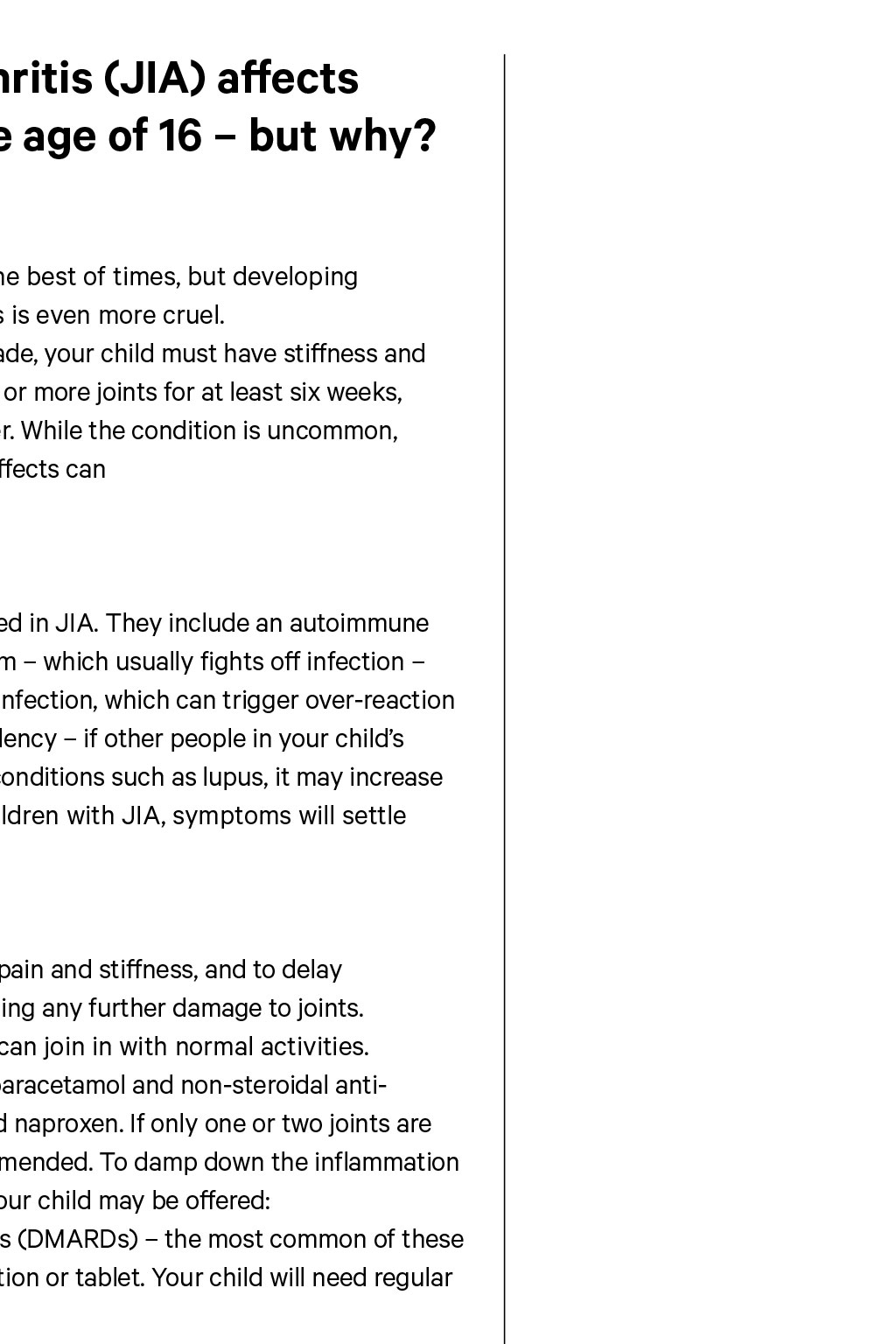









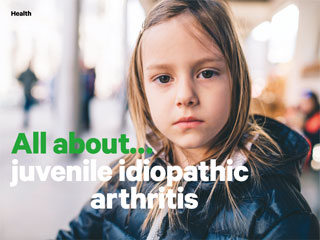
Health istock.com / seb_ra All about juvenile idiopathic arthritis Juvenile idiopathic arthritis (JIA) affects young people under the age of 16 but why? Words: Dr Sarah Jarvis H aving arthritis is a challenge at the best of times, but developing symptoms before your mid-teens is even more cruel. For a diagnosis of JIA to be made, your child must have stiffness and pain in or inflammation of one or more joints for at least six weeks, although symptoms often last much longer. While the condition is uncommon, affecting about one in 1,000 children, its effects can be profound. What causes it? While JIA is uncommon affecting about one in 1,000 children its effects can be profound Many different factors have been implicated in JIA. They include an autoimmune problem, where your childs immune system which usually fights off infection turns on part of their body and attacks it; infection, which can trigger over-reaction by the immune system; and a genetic tendency if other people in your childs family have rheumatoid arthritis or other conditions such as lupus, it may increase their risk of JIA. For up to two in three children with JIA, symptoms will settle by adulthood. Treatment The main aims of treatment are to relieve pain and stiffness, and to delay progression of the disease, ideally preventing any further damage to joints. Hopefully, this will ensure that your child can join in with normal activities. Painkillers commonly prescribed include paracetamol and non-steroidal antiinflammatory drugs, such as ibuprofen and naproxen. If only one or two joints are affected, a steroid injection may be recommended. To damp down the inflammation and slow down or prevent joint damage, your child may be offered: Disease-modifying, anti-rheumatic drugs (DMARDs) the most common of these is methotrexate, given as a weekly injection or tablet. Your child will need regular blood tests while taking them. Biologic therapies these are newer drugs, although many have been around for almost a decade. Like DMARDs, they damp down the immune system. They include etanercept, infliximab and adalimumab. Non-drug treatments, such as physiotherapy and occupational therapy, are invaluable to keep joints mobile and help young people to be as active as possible. Keeping active reduces stiffness and long-term disability.